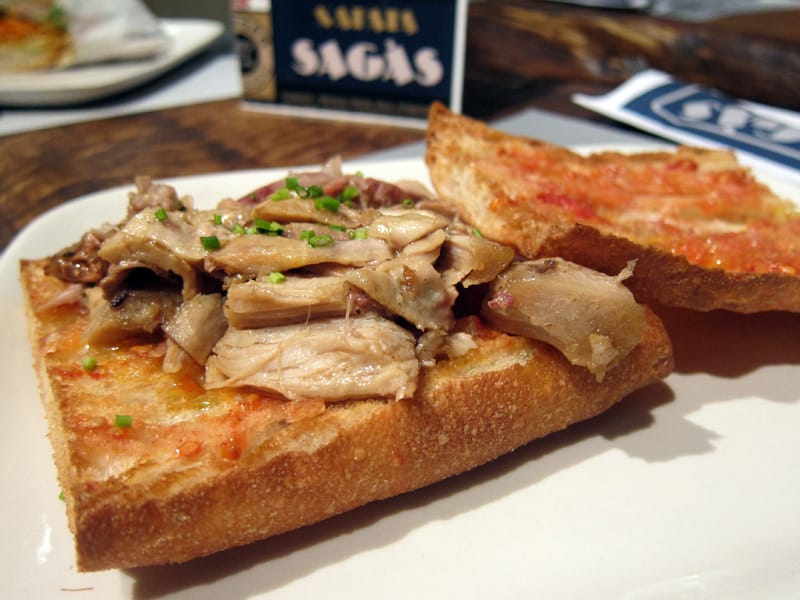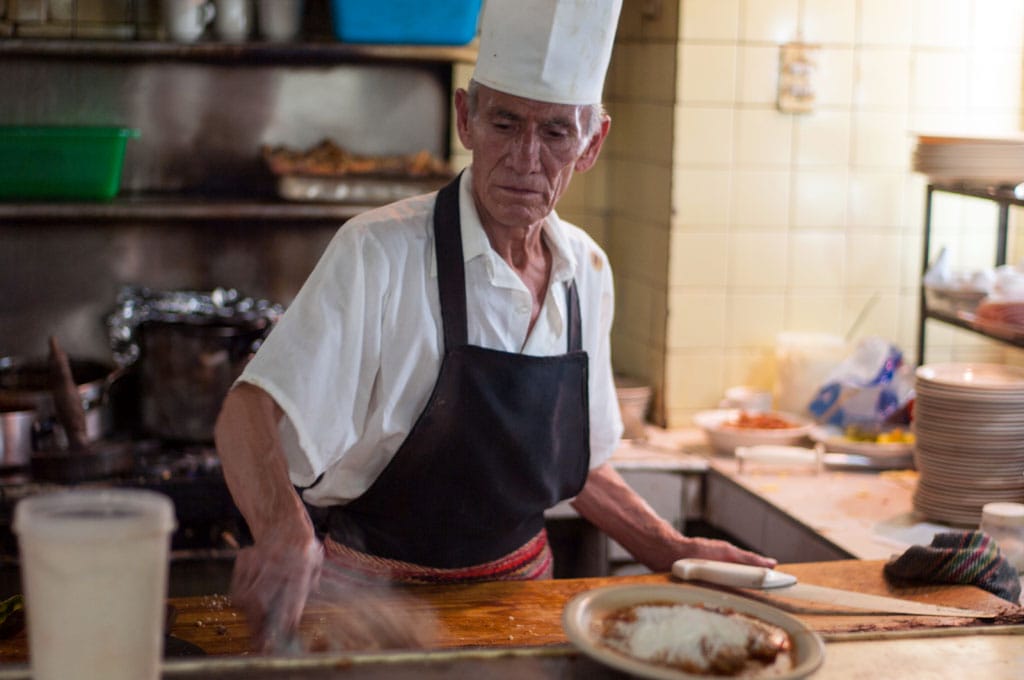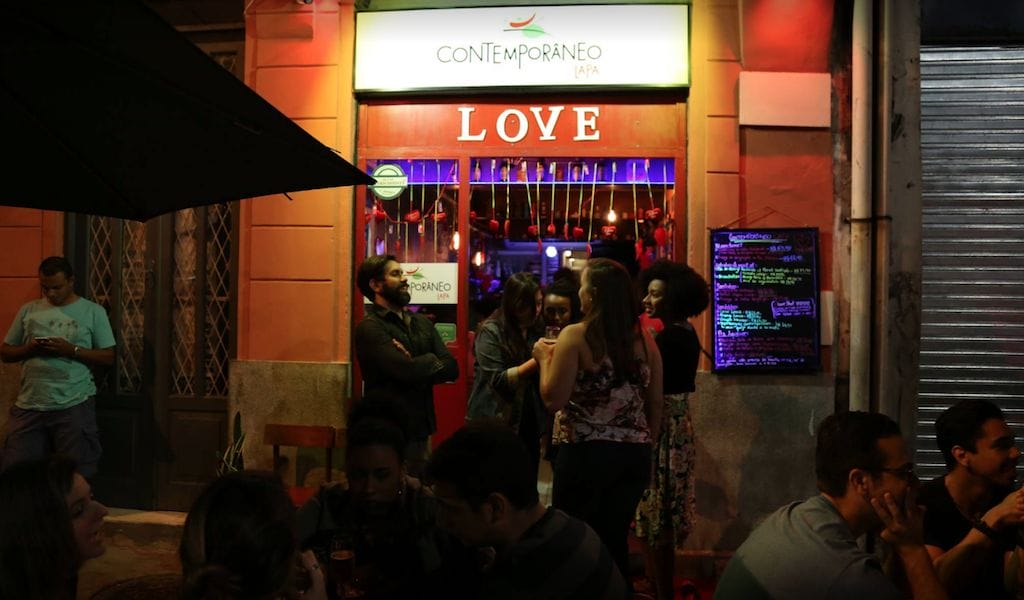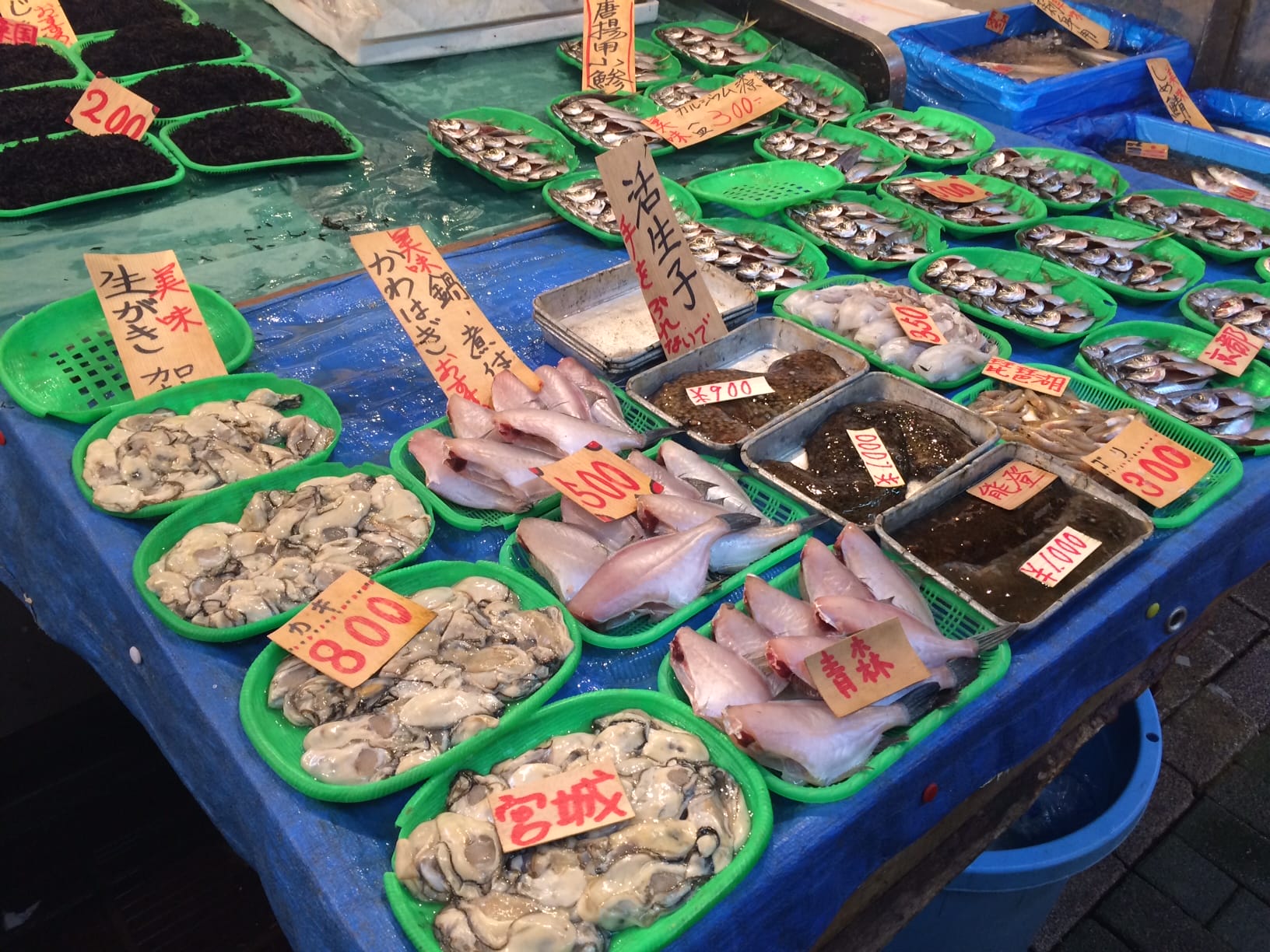It all started with a seriously delicious hamburger in New York City. Rumor has it that it was this burger that first gave acclaimed Catalan chef Oriol Rovira the idea of opening Sagàs Pagesos y Cuiners (“Farmers and Cooks”) in the Born district of Barcelona. Specializing in high-end sandwiches, the restaurant embraces the farm-to-table philosophy, with a menu that is both distinctively Catalan and international in scope.
Rovira, who also runs Els Casals, a Michelin-starred restaurant in the tiny village of Sagàs near the edge of the Pyrenees, opened his sandwich spot in May 2011. As at Els Casals, nearly all of the food at the Barcelona venue comes straight from the chef’s village farm. But why sandwiches? According to Irene Baños, the second maitre d’ at Sagàs, Rovira feels that in recent years much of the cuisine coming out of Catalonia has been too “elaborado,” and he wanted to provide something more simple but just as tasty. The sandwich was thus the perfect solution. In addition, because sandwiches must be eaten with the hands, Rovira believes diners are able to get more in touch with what they are consuming.
The menu at Sagàs is divided into two sections: “Origens” and “Mundo.” The first offers a selection of sandwiches based on traditional Catalan cuisine, while the latter features concoctions inspired by cuisines from around the world, such as Sicilian smoked sardines, Mexican chicharrón and even a Texas Chili Cheese Burger. There is also a selection of desserts and a mid-sized drinks menu that includes a variety of “Gin Tonics,” wines, beer and cava (Spanish sparkling wine).
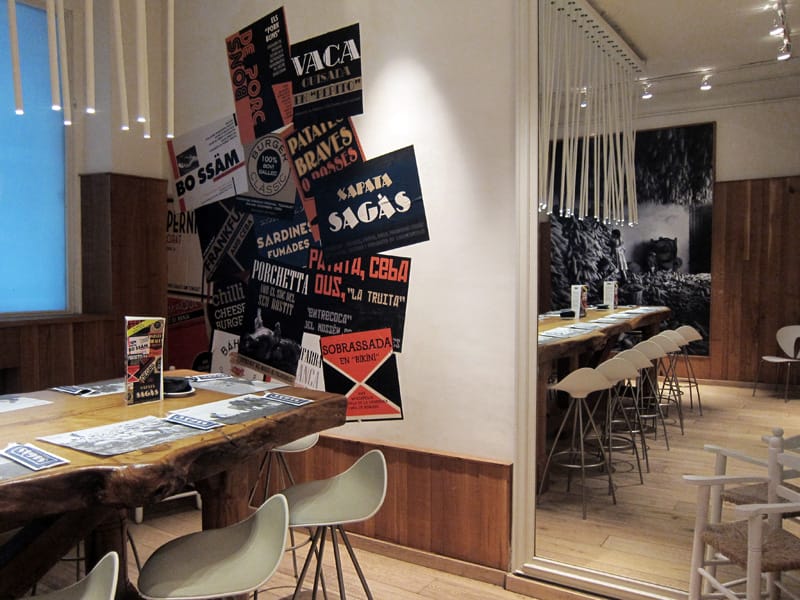
The most popular sandwich on the “Origens” menu is the “Porchetta” – roasted pork served on pa de coca, a traditional Catalan flatbread – and we could certainly see why. The crunch of the coca and the tender juiciness of the flavorsome pork was a killer combination. We were similarly impressed by the “Botifarra Perol,” Catalan sausage stuffed with locally gathered mushrooms and served on a toasted baguette; each bite was a hot burst of flavorsome, mushroomy pork. From the “Mundo” menu, we tried the Vietnamese “Báhn Mì,” a baguette filled with porchetta, spicy red Sriracha sauce, carrots, ginger and cilantro. By this time, with sauce dripping off our chins and covering our fingers, we had more than achieved Rovira’s goal of “getting in touch” with our food. For dessert, we finished up with a wicked Catalan combination of chocolate, olive oil and salt served on warm toasted pa de coca.
Given that Sagàs is located in the middle of one of Barcelona’s prime tourist districts, we were surprised to learn that the clientele is overwhelmingly local. “What we have here is very Catalan, so most of our customers come from around here,” comments Baños. Turns out eating with their hands and getting their fingers a little greasy is not such a foreign concept for Catalonian eaters after all.
Johanna BaileyJohanna Bailey
Published on November 23, 2012
Related stories
November 26, 2015
Mexico CityThe bird that holds pride of place at the Thanksgiving table has just as important a role south of the border. Turkey has actually been a fundamental part of Mexican cooking for centuries: The Aztecs had domesticated the fowl before they had even laid eyes on a chicken. And while chicken has since overtaken turkey…
September 1, 2017
RioLapa is the heart of bohemian Rio de Janeiro, a place that pulses with samba music and the clamor of bargoers. Local musicians, artists and intellectuals (and tourists, too) flock to this old neighborhood, which during the day is best known for its rich stock of colonial-era architecture and where at night more than 200…
July 22, 2019
TokyoWonderful spreads of the freshest catches are among the swirling array of visual delights witnessed on our Tokyo walk. Oh, did we mention there's lots of eating involved as well?







































